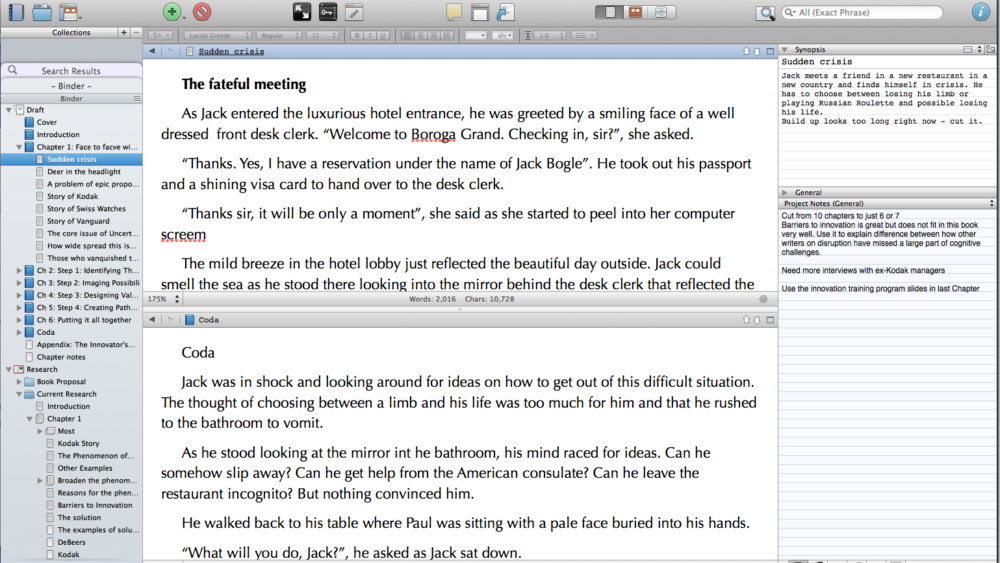Have you ever tried installing a book shelf speaker on a wall with only a screw driver? If you have, you know it is not impossible to do so but it is a major pain; it requires unnecessary work and can take hours to achieve the goal. But what happens if you have a stud finder, a drill, drill bit, a leveler, a pencil, a measuring tape and a light hammer for the job? With these tools you can finish the same task in a no time?
Writing on Scrivener makes me feel I have all the needed tools to do the writing task. It makes writing a breeze just like all the tools above make installing a speaker so easy. The larger and more complex the writing task, the greater the power of Scrivener.
Although it took me a few years to write The Dark Side of Innovation (#TheDarkSideOfInnovation), it would have been very difficult without Scrivener. After using Scrivener for writing the book, now I do all my writing on Scrivener.
When I finished 90% of my research for The Dark Side Of Innovation, I began outlining the book. Although I used a mind mapping software back then, if I had Scrivener, I would have just outlined in Scrivener. A key role of an outliner is to give structure to a piece and Scrivener does a great job at it.
I discovered Scrivener some time after I had started writing the book. At that time, I just moved my outline and whatever writing I had done into Scrivener. Merely moving to Scrivener made it so much easier to write without worrying about how it will all fit together. Scrivener helps in writing because it stores your writing in bite size pieces. For me, writing in bites is much easier than keeping the entire work in mind each time I sit down to write.
Scrivener was even more helpful once I was done with the first draft. At that time it became easy to just move parts of the book around in a way that it improved the structure and the message. This was perhaps the biggest help from Scrivener. For example, I was unhappy with the way my first chapter was looking even after I had revised several drafts. The flow and the sequence of arguments and stories were just not working well for me. At that time I did a major rethinking on how this chapter should look like and made several different possible structures. One of them was very promising. The next step was to put the old chapter in a new structure. Scrivener was a life saver here.
Without Scrivener, I would have probably rewritten the first chapter entirely. But scrivener stores small pieces of writing which can be rearranged like Lego. Once I rearranged these pieces, I could instantly see the impact of new structure. After cleaning up the new structure, it became the new first draft. Testing out different structures is very easy to do in Scrivener.
Once I finalized the structure and polished the document, I took it to Microsoft word. After that, it didn’t need much rewriting and restructuring and I focused entirely on line editing.
Due to these and many other helpful features, even before I was done writing The Dark Side Of Innovation, Scrivener became my favorite writing software.





Please note: I reserve the right to delete comments that are offensive, or off-topic. If in doubt, read my Comments Policy.